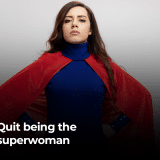Women in CS – an inspiring legacy

Author: Sumona Chetia
Describing computer science as a field that ‘girls are not interested in than boys are’ has been the norm. Gender stereotyping in this field of study and work has led young girls to lose interest. However, tech wasn’t always a man’s world.
Credited as the first world’s first computer programmer, Ada Lovelace designed plans for the Analytical Engine (invented by Charles Babbage). In her remembrance, Ada Lovelace Day is celebrated on the second Tuesday of October to recognize women in science, technology, engineering, and math (STEM).
In the dawn of the digital age of computing, women contributed in a big way to the development of the first computers and computing theory.
1930s – 1940s: The Women Computers
- The world’s first general-purpose electronic digital computer: The Electronic Numerical Integrator and Computer (ENIAC), was an outcome of the ground-breaking programming work of a team of six women. Referred to as human computers, the six women~ Betty Holberton, Jean Jennings Bartik, Kay McNulty, Marlyn Wescoff Meltzer, Ruth Lichterman, and Frances Bilas Spence had to program the 8 feet tall and 80 feet long without instructions. To date, this remains an untold story of the true enablers of the so-called machine intelligence.
- Movie star and inventor Hedy Lamarr invented a communication system, which formed the basis of modern-day Wi-Fi, Bluetooth and GPS.
- Grace Murray Hopper, also referred to as the Mother of Computing, developed the first computer languages, including the Cobol programming language.
1950s-1970s: The Golden Age of Women in CS
- Margaret Hamilton, the trailblazing computer scientist, created the term software engineer to describe her work. A working mother, she led the team instrumental in creating the onboard flight software for the Apollo missions, including Apollo 11.
- Mary Kenneth Keller, the first woman to earn a PhD in computer science, was a Roman Catholic nun.
- Stephanie “Steve” Shirley was a pioneer in advancing the role of women in IT and computer programming. Her software firm Freelance Programmers’ first 300 staff were exclusively women who worked form home.
It’s inspiring to see that women have not always been so underrepresented in the IT sector. To challenge the status quo and continue the mammoth representation and advancement of women in the IT pipeline, it is necessary to implement exposure to computers and coding in secondary school. Imparting knowledge of computer science without gender bias is sure to boost women’s interest and strengthen their confidence. It’s time to show girls and women of all ages that they are welcome in tech.









